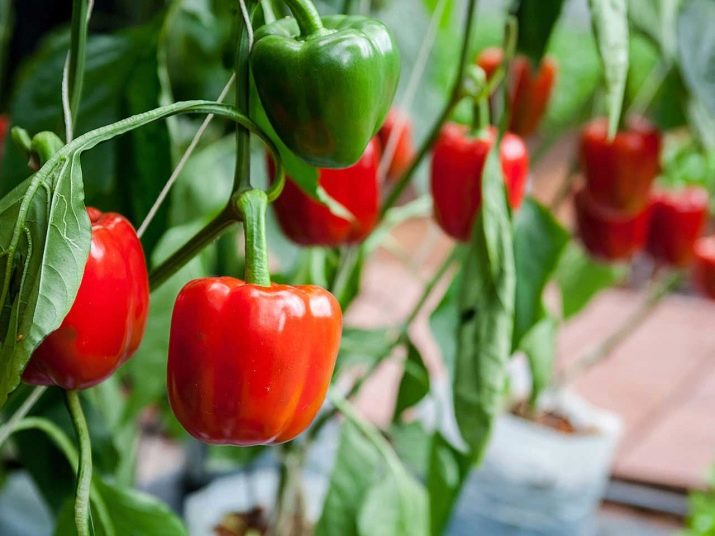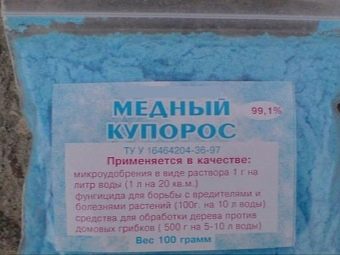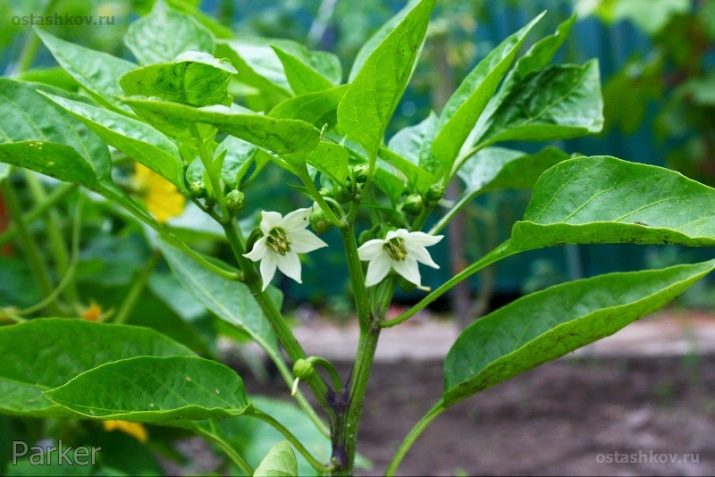Pepper flowers fall: causes and treatment

Sweet pepper, in addition to excellent taste, has a lot of useful properties, due to the content of large amounts of vitamins and valuable trace elements. It is not surprising that it is cultivated not only in their own areas, but also at home. However, the process of growing this vegetable is often complicated by the fact that the pepper has flowers, and in some cases recently formed fruits. If you do not deal with the problem immediately, it can lead to loss of the crop.
Features of the cultivation of sweet pepper
The homeland of sweet pepper is Central America. This is a southern vegetable that prefers a warm climate, so in the middle zone it is usually grown using the seedling method in greenhouses.
This plant is quite capricious, it does not like as much watering, and the drying of the soil, so you need to respect the middle ground, moistening the soil very carefully. Pepper is demanding to the light - in February (during the period of seedling development) and during further development it needs at least 12 hours of full coverage.
Frost can affect the growth process - if the temperature drops below one degree of frost, there is a risk of being left without a crop.
Culture is planted in soil in May-June, and a little earlier in the greenhouse at the beginning of April. To grow a high-quality crop, you need to choose the right soil. It is prepared in advance, for about a year, using organic matter, phosphate and potash fertilizers, in the spring in addition ammonium nitrate is added to the upper soil layer.
Since the culture is prone to disease, the soil is disinfected using a solution of copper sulfate. Experienced gardeners are not advised to plant the plant in open soil in cold and even warm climatic zones, as in such conditions the pepper slowly grows and late bears fruit.
Faced with such an unpleasant phenomenon as a fall of the ovary, the causes must be sought in improper preparation of seedlings, soil and illiterate care.
Insufficient and excessive watering
Culture does not tolerate drought and reacts to such negative changes very quickly. That is why planting in hot dry times is not recommended. It is because of this that pepper is poorly pollinated or pollination does not occur at all. As a result, the buds just turn yellow, dry up, and then fall off. Of course, the fruits may start to form, but they will be formed incorrectly, and as a result, the taste of the pepper will suffer.
Watering is essential for a given plant and is required when opening each flower. On dry days, the culture is watered twice a day - in the morning and evening. During the day in direct sunlight this can not be done.
After the appearance of the ovary and with the growth of the fetus watering is required extremely cautious. Due to lack of moisture, the pepper can be fine, lose the thickness of the pulp and juiciness. But its surplus in the soil can attract slugs that can destroy part of the crop, as well as cause the plant roots to rot.
In addition, it should be remembered that the water for irrigation should be warm - at least +30 degrees. If you water the plants with cold water during their growth, it can slow down, because of what the flowers do not appear, and therefore do not wait for the fruit.
If the pepper is grown in the apartment on the windowsill and the flowers fall off before planting in the soil, the reasons should be sought in the mismatch of the pot capacity (it is too cramped for the root system) or overdrying the ground.
In this case, we can advise:
- together with the earthy clod, carefully remove the plant and transplant it into a more spacious pot;
- try to water the crop every day at the same time until 11.00 am, the water should be at room temperature.
To check the soil moisture, use a wooden stick - if it is dry, then the pepper needs watering.
Violation of temperature and humidity
Cold air can suppress the vital activity of a plant, and this must be taken into account. At the same time, mature, mature plants are more resistant to low temperatures than tender seedlings.
Adult bushes can continue to bear fruit even at +15 degrees, but a further decrease leads to the fact that flowering stops, the flowers fall off, at +13 degrees and below the pepper can get sick. Meanwhile, if the temperature rises to +35 degrees, the plant also sheds flowers and already formed fruits, the same effect can be expected with a long-lasting heat above 30 degrees.
Especially unfavorable sudden changes in temperature at night and day. Under greenhouse conditions, it is easiest to control equilibrium. If it is necessary to reduce the temperature, this can be done by airing, opening and closing the vents. The same can be done in the apartment.
The reasons that buds fall off and even young ovaries sometimes lie in improper air humidity, it is desirable to maintain it at the level of 60-70%. At high rates, airing will also help. In a residential area with too dry air, special humidifiers or water fountains can be used, and in a greenhouse you can spray water with a sprayer.
Feeding rules
Improper fertilization of plants can also lead to shedding of flowers, and much more often this is affected by an excess amount of fertilizer. Pepper loves light soil with a high organic content. One of the important components for the growth of leaves, stems and roots is considered to be nitrogen - when it is deficient, growth stops, but if it is too much, it causes a violent development of green mass to the detriment of the formation of fruits.
Be sure to contain potassium and phosphorus in the soil, but when "overfeeding" the plant is too heavy a load, and, despite the fact that on some branches a huge number of buds can form, others drop some flowers. What to do in this case? Just stop feeding for 10-15 days.
Other probable causes of falling
Other causes may also cause dropping of buds and peppers.
The most common ones are:
- planting peppers too close leads to inadequate nutrition of individual plants, there should be up to 25 cm of free space between the bushes;
- shedding of buds is due to the fact that the first flowers were not removed, it is necessary to do this for the full development of the ovaries;
- sometimes pests are caused by the greenhouse whitefly and spider mite, the problem will be solved by spraying with special means and an infusion of yarrow and chamomile;
- in the conditions of an apartment or a greenhouse, the ovary disappears, due to the absence of pollination, airing the room and artificial pollination using a small brush will help to eliminate the problem;
- if the seedlings do not have enough sunlight since its emergence, then the pepper can drop flowers and ovaries, but this should be taken care of before planting.
Observing the rules of planting, maintenance and watering, as well as pollinating the flowers in a timely manner and applying the required amount of fertilizer to the soil, you can avoid such troubles as shedding buds and pepper stalks.
For more information about the problems that may arise when growing peppers, see the video below.






























